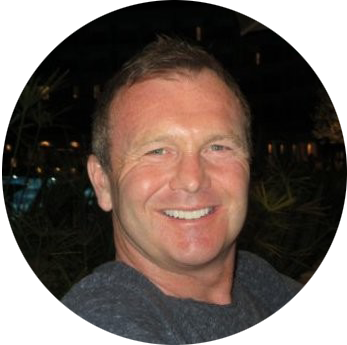I often get asked how to build teams with high performance. It seems that few managers and leaders align the stars when it comes to having people working with their strengths, cooperating towards commons goals, growing in their careers and be high performing teams – and all of this whilst delivering business results.
Firstly, it’s important to understand that high performing teams are made of high performing people.
Secondly, high performing team members have high performing managers.
In most companies, neither people nor managers are flourishing – and you need both. It’s a harsh reality but many managers have little idea about what they are doing, and they are wrongly spending their time trying to develop underperforming people.
So, what do managers do to build people to become high performing teams?
Step 1 – They become a high performing manager.
To talk about being a better manager means to talk about being a better person.
It is a mistake to ask others to behave, grow and achieve in ways we, as managers are not prepared to ourselves. The first step therefore, is to develop our own skills, abilities and behaviours, to become a better person able to encourage others to reach their potential too.
This isn’t merely about developing work-related skills and abilities, it’s about balancing the tension between every foundation of ourselves; our health, our wealth, our education, our social impact, our family and our effectiveness. I call these the Pillars of Management, and far too many of us have the tensions pulling in the wrong direction. To be a long-term high performer at work, we must consciously balance the many aspects that make us who we are.
Step 2 – Be Visibly Passionate and paint a bright future
We must become a VP. Not a Vice President but Visibly Passionate at work. It’s about getting behind the mission of the organisation and encouraging others to be more than they are.
High performing managers paint a beautiful, inspiring, concrete and realistic picture of the future and constantly shine a light on it, even when times are tough.
People want to work with others who are visibly passionate. It’s contagious. It’s a behaviour of high performing managers.
Step 3 – What’s stopping us from achieving this bright future?
Effective managers must articulate the challenges and problems that are standing between where the team are now, and an inspiring future. After all, if the future was easy to obtain, the organisation would already be doing it.
What problems need to be solved? What’s stopping the team from getting there? How does the organization, and the people in it, need to change or grow in order to reach this True North?
Effective managers use evidence, data and observations, not the grapevine, rumour, hearsay or loudly voiced strong opinions.
The problems and obstacles are then turned in to a strategy. A strategy must have implementation ideas, experiments, decisions, work – yet be simple and easy to communicate. If it’s simple and easy to communicate people can get behind it, believe in it, trust it, and see progress against it.
Brilliant managers make these problems so compelling, exciting and interesting that talented people flock to solve them. After all, exciting companies have exciting problems to solve, and boring companies have boring problems to solve.
Step 4 – Develop people
People must feel like the job is developing them. It’s a manager’s job to create the right environment and opportunities for people to thrive.
This is done by setting clear expectations about the behaviours that are expected within the organisation. After all, a company’s culture is nothing more than group habit, it is what people do every day.
If you want a great culture, you need great behaviours. It’s important that managers make it clear what’s expected from people. It seems bizarre to have to articulate positive, co-operative, energetic, creative, respectful, professional behaviours to people within the organisation, but every day stories emerge of companies with cultures that are toxic. Toxic cultures are caused by toxic behaviours. I see some terrible behaviours in the workplace that managers are tolerating. Managers get the behaviours they tolerate, not the ones they expect. And if you tolerate poor behaviour, the culture of the organisation is set on a downward spiral.
Managers must encourage people to demonstrate the right behaviours by giving feedback, using behaviours as benchmarks of performance, setting high standards and hiring people who demonstrate the right behaviours from the start. And of course, managers and leaders must demonstrate these behaviours themselves, they should be the shining light, the high bar, they should be the example.
It’s important to provide coaching, career progress, learning opportunities and succession planning. This should be in-line with people’s strengths, interests, career goals and of course, these should align to what the business is trying to achieve.
Succession planning is important, yet rarely addressed – except by the high performing manager.
People must also know who to ask for help, what role others play in the business and how they themselves contribute to the success of the business. I call this raising collective consciousness.
And almost all of these activities are the responsibility of management. No command and control needed, just empathy, good communication skills and a genuine desire to help people be better. In fact, the manager who doesn’t want to see others succeed, should not be a manager.

Step 5 – Build systems of productivity and good habits
The fifth step in building high performing teams is to build systems of productivity and good habits that create flow in your organisation and deliver value to customers.
I often talk about “Releasing Agility”. Agility is the ability to move quickly and with ease towards a goal. It’s therefore the role of management to release agility in an organisation – to free up forward momentum, remove friction and help people move with ease towards the end goal.
As you release agility, more problems emerge, more capability is needed, different thinking is required, and growth is necessary. But overcome these next problems and more agility is released, more value can be shipped, and less friction stands between you and the customer. This is the hallmark of a high performing team – they are getting better – all of the time. And this growth is adding to the bottom line too.
Employee Engagement
If you get all of these elements correct, you’ll have aligned the stars and be working within a high performing team, or at least on the right journey. It’s an amazing thing to see – people and organisation in harmony – getting better and better every day.
And you know what?
As a side effect of getting your people foundations correct and Releasing Agility, you’ll get Employee Engagement for free. And all of this is achievable without a HR lead engagement initiative, company slide, waffle maker and crayons at break time.
Rob Lambert helps managers and leaders bring professional management and communication to agile companies. I do this by helping managers, leaders and coaches focus on their own personal pillars and principles of success, learn how to balance the constant need to be effective AND liked and help them to “Release Agility” in the organisation. All done through clarity, positive behaviours and people-orientated engagement.
To join us on our journey and keep up-to-date with the latest news and opinions from the world of change and transformation, follow us on LinkedIn and Twitter.





































































